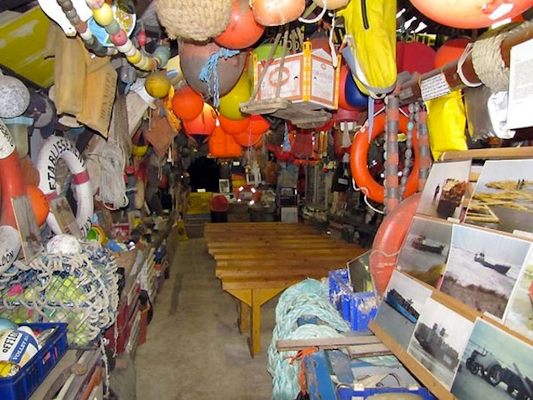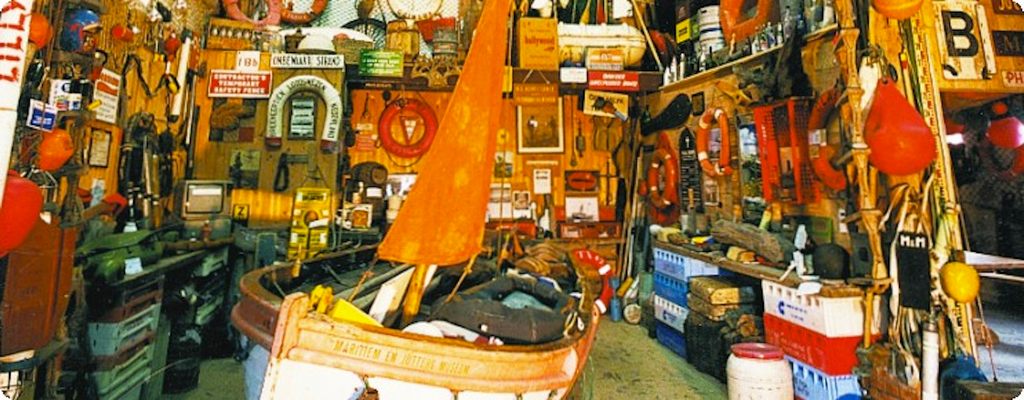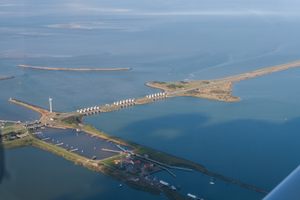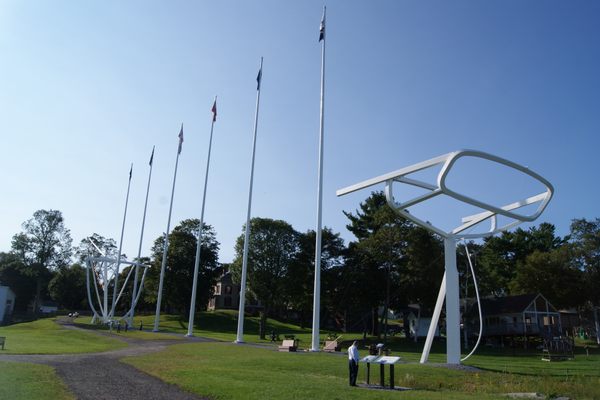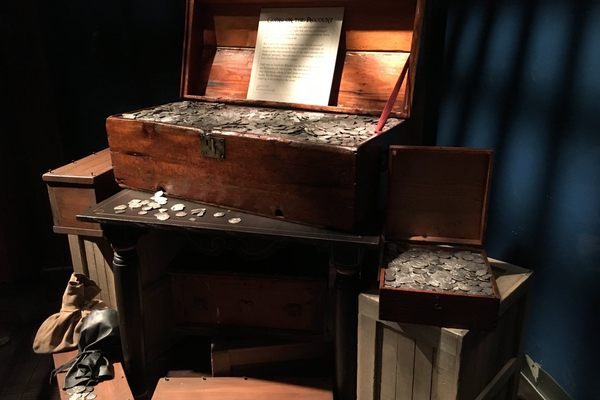About
Located behind a Texel, Netherlands farmhouse, the Shipwreck and Beachcombing Museum preserves decades worth of restored flotsam and jetsam and provides the sailor's tales to accompany the debris.
According to the owners and salty dogs who operate the museum, it is the "First and largest, genuine beachcomber's museum in the world." Known as "jutters" in the native Dutch, the local beachcombers have been collecting life preservers, broken naval equipment, and whatever else washes up on their stormy shores for over 70 years, and their collected bounty has been categorized and collected in every corner of the tightly-packed museum. One room features wall-to-wall life preservers and buoys, while the entry area is completely covered in signs and nameplates (although many of these have nothing to do with the jutters' collection, they certainly fit the feel of the place).
This is to say nothing of the huge amount of large amount of oversize pieces scattered around the exterior of the site. From a separated captain's cabin to massive rusting anchor winches, the outdoor collection looks like a mix between a sculpture garden and an exposed sea-bottom ship wreck.
In addition to all of the hectic castoffs littering the Shipwreck and Beachcombing Museum, there are constant videos playing detailing the history of the area's shipwrecks and beachcombing activity. In addition to the videos there is usually one of the museum's operators holding court and spinning yarns of the treacherous sea.
Related Tags
Community Contributors
Added By
Published
January 2, 2013
